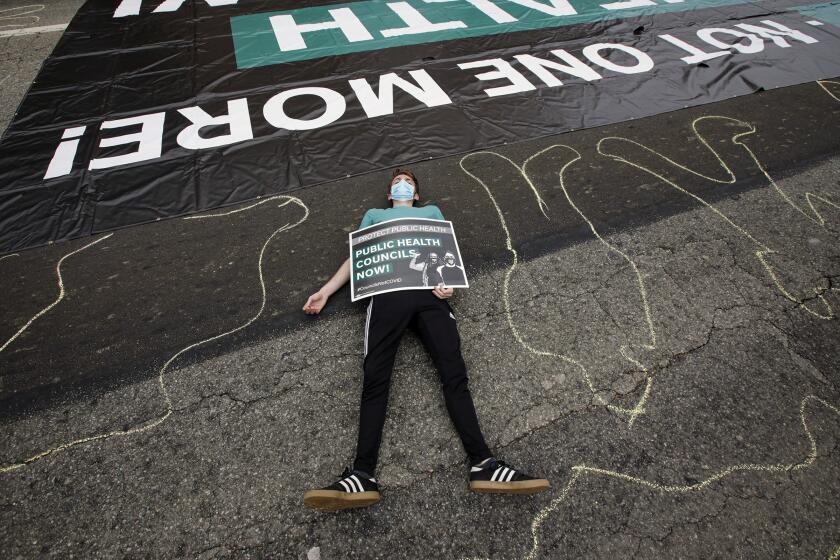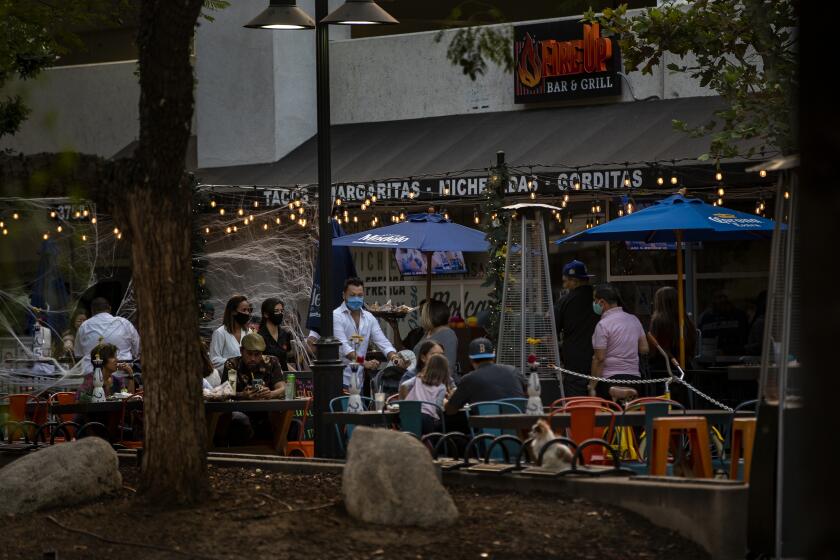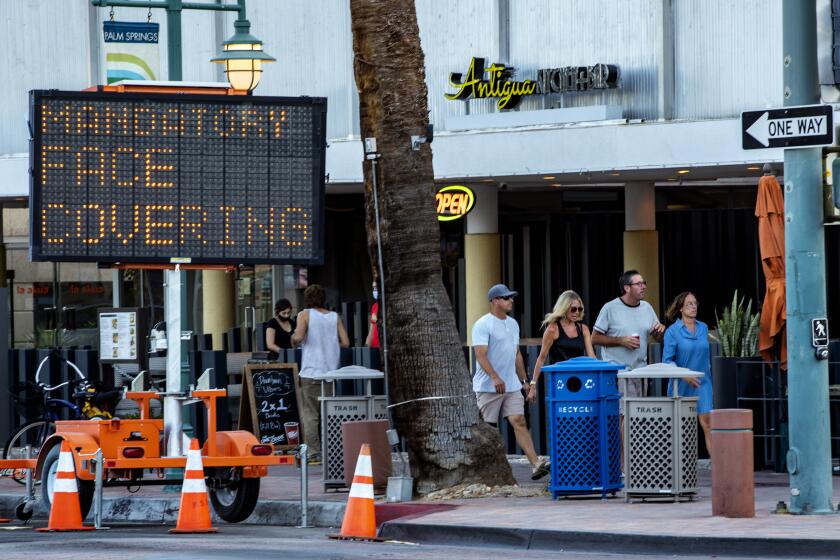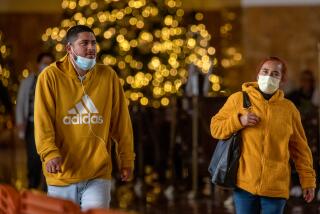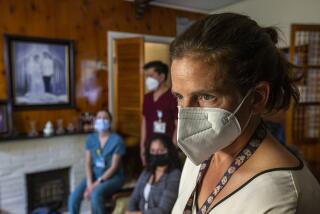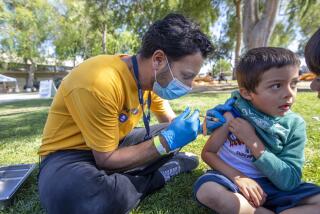Unhappy with rules for reopening, Riverside County looks to pressure Sacramento
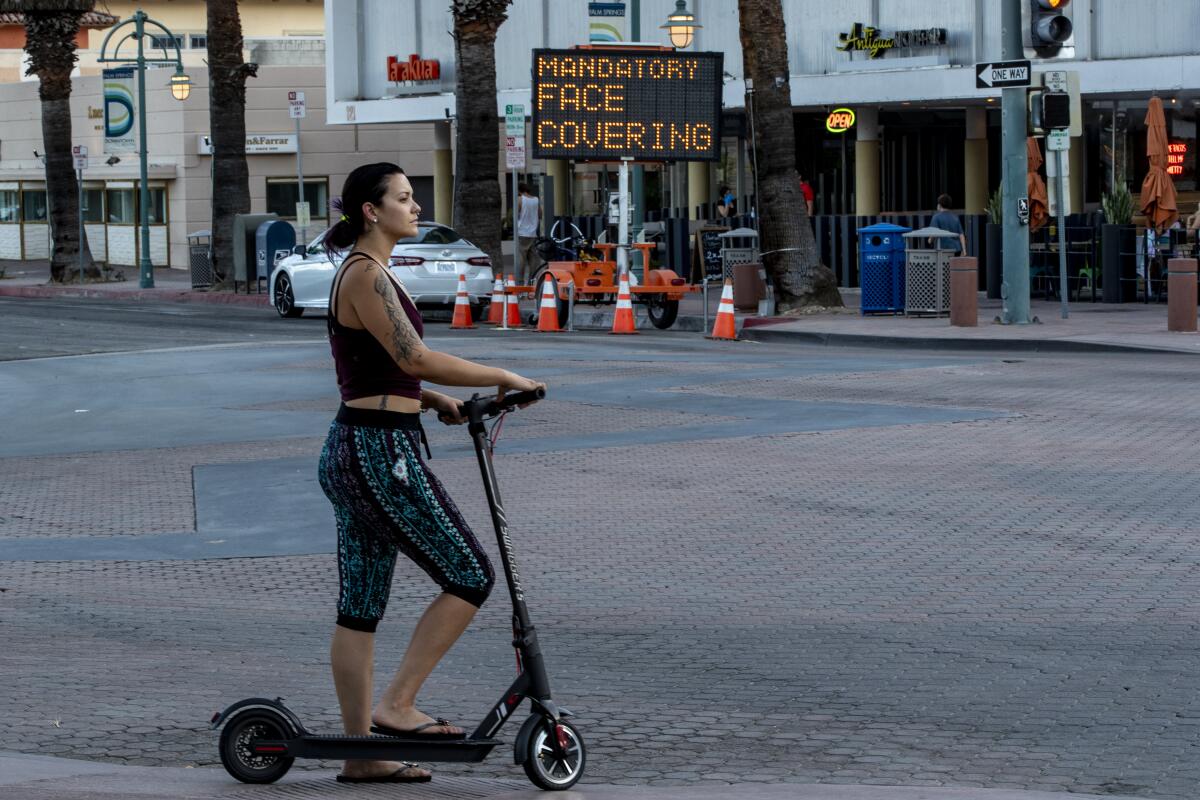
Frustrated with the state’s process for allowing businesses, schools and other facilities to reopen during the coronavirus pandemic, leaders in Riverside County are looking to join forces with officials in other Southern California counties to press Sacramento for changes to its strategy.
The Riverside County Board of Supervisors voted unanimously Tuesday to approve a report that called on the county “to work in a collaborative fashion with our colleagues in other Southern California counties to engage the state in a truly meaningful conversation of the devastating impacts that the state tier system, as currently configured, is having on our counties.”
Supervisor Karen Spiegel, who introduced the motion, and others on the board criticized California’s four-tier, color-coded system for deciding how far each of the state’s 58 counties can go toward reopening as overly broad and unequally applied.
“I’ve always said there’s power in numbers,” Spiegel said. “Our voice is louder than just one county.”
Under the state’s approach, a county is put in one of four tiers depending on the number of infections it records and the percentage of tests that are positive for the virus. As a county gets better control over the virus’ spread, it moves up the tiers and can increasingly reopen. If it backtracks, it must clamp down on what types of business are allowed to operate.
The system, the Riverside report said, is applied statewide “without recognition of the tremendous diversity of California’s geography, demographic density, or other factors.”
Among the sectors the state should review or rethink, supervisors said during their discussion, are gyms, restaurants and hotel meeting spaces.
“Reexamination, I think, is a great thing. Having a dialogue with the state of California, I think, is a great thing,” said Supervisor V. Manuel Perez.
He added, though, that “it’s important that we stick to the science, and it’s important that we stick to the public health concerns like the social distancing and the facial coverings, obviously washing our hands ... because I think that’s also equally as important in moving us forward in reopening.”
The average numbers of new COVID-19 cases per 100,000 residents in four counties — Imperial, San Bernardino, Riverside and Los Angeles — are currently among the highest in the state.
The agitation in Riverside is the latest example of discontent among county officials around the state, many of whom have lobbied the state to change its COVID-19 restrictions throughout the pandemic. Riverside officials previously have voiced concern, saying they wanted more local control over reopening guidelines.
Generally, counties are allowed to adopt rules that are stricter, but not more lenient, than the state’s — though officials in Sacramento “work collaboratively and closely” with health officers and elected officials at the local level, Gov. Gavin Newsom said Tuesday.
Some Riverside County supervisors, though, accused the state of having an uneven hand when it comes to categorizing counties within the tier framework.
“I do recognize that there is the potential that certain counties are getting preferential treatment,” said Supervisor Kevin Jeffries. “Generally, if you’re Bay Area, you’re treated in much higher regard, much more respect. And the inland counties, you’re basically poorer counties and, ‘good luck you’re on your own.’”
However, this week’s move comes as state and health officials have expressed some concern with recent increases in coronavirus infections. With much of the nation grappling with significant spikes in new cases, some warn California could face a similar fate unless the state collectively takes the steps necessary to ward off a surge.
“We are seeing increased disease in the community,” Riverside County Public Health Director Kim Saruwatari told the Board of Supervisors Tuesday. “This is consistent with what other areas of the country are seeing, and we are fortunate that we’re not seeing it to the level that many others are.”
Experts warn of pandemic fatigue and complacency with the approaching holidays, which have the potential to be super-spreading events.
Riverside County is currently in the purple tier, the most restrictive in the state’s system. They are considered to have widespread risk of community coronavirus transmission and many businesses and public facilities are either barred from operating indoors or only allowed to do so with strict limits on capacity.
Counties are placed in the purple tier if the average number of new infections for every 100,000 people is seven or more, or the percentage of tests that detect the virus is 8% or greater.
Of the nine counties currently in that category, four are in Southern California — Riverside, Los Angeles, San Bernardino and Imperial.
California health officials will devote additional resources to curb coronavirus transmission rates in Riverside, L.A. and San Bernardino counties.
Overall, there have been more than 66,000 confirmed COVID-19 cases in Riverside County throughout the course of the pandemic, as well as roughly 1,300 deaths.
L.A. County has seen a recent uptick in coronavirus infections, from an average of about 940 new cases a day in early October to almost 1,200 as of last week, according to Public Health Director Barbara Ferrer.
However, COVID-19 hospitalizations have remained relatively flat for some time — “we’ve been below 1,000 people hospitalized each day for most of September through October,” she said Wednesday — and the average daily number of deaths has fallen from a peak of about 44 in late July to roughly 13 last week.
“This continued decrease in deaths is promising,” Ferrer said during a briefing. “At the same time, we know that an increase in cases can and usually does result in increases in hospitalizations and deaths several weeks later. This is why it’s so important that we remain vigilant.”
She announced 1,351 new cases Wednesday, pushing the county’s cumulative total past 303,000. More than 7,000 Angelenos have died from COVID-19.
The tier system was designed to have a “slow and stringent approach,” that forces counties to show consistent success in stemming coronavirus transmission before moving ahead with wider reopening, said California Health and Human Services Secretary Dr. Mark Ghaly.
Many counties have managed to do so. Initially, 38 counties were placed in the purple tier, while only two were in the least restrictive yellow category, according to Ghaly. Those numbers are now nine and 10, respectively.
It remains to be seen whether other counties in Southern California will join Riverside to pressure state officials for more flexibility in reopening. Some officials in neighboring counties have also been critical of the state’s COVID-19 strategy.
Last week, Michelle Steel, chairwoman of the Orange County Board of Supervisors, who is running for Congress, said that “the top-down approach to mitigating COVID-19 from Sacramento is not working.”
“Orange County has not been the only county to express concern about this model,” she said during a news conference. “We want to work with the state on containing and eventually eliminating this virus, but this top-down approach with little communication isn’t productive. Each local government has different issues affecting the spread of COVID-19.”
More to Read
Sign up for Essential California
The most important California stories and recommendations in your inbox every morning.
You may occasionally receive promotional content from the Los Angeles Times.
